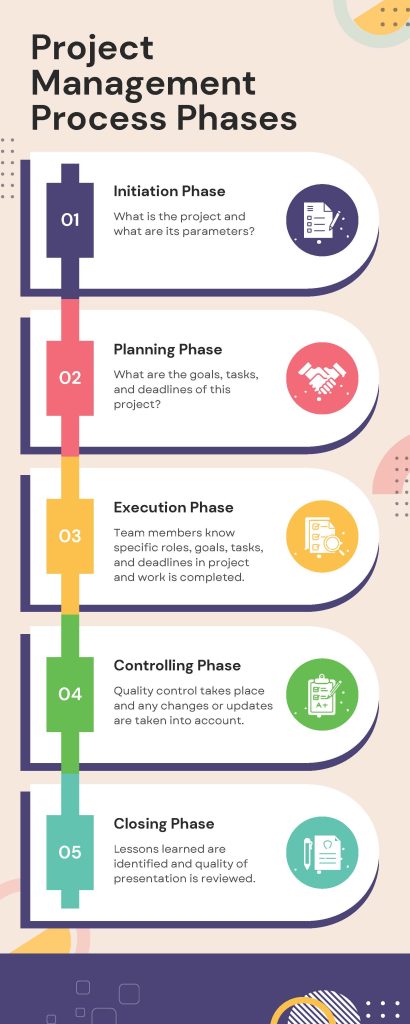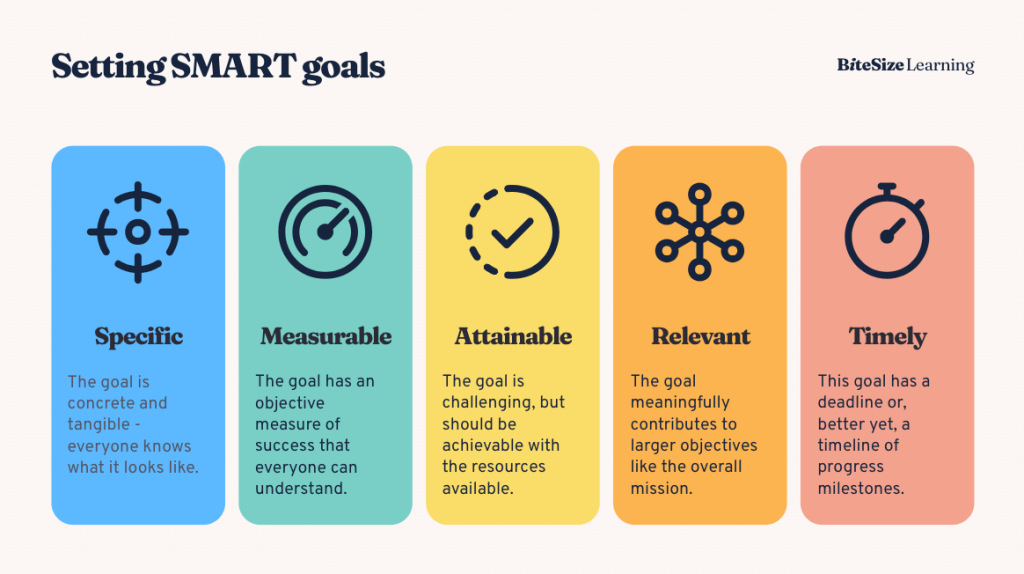6 Project Management
Preparation for a team case presentation can be a complex process. For the process to go smoothly, each member of your team needs to be informed and in agreement about the overarching goals of the presentation, the presentation theme, and many other elements to have a well-developed and high-quality product to deliver. In addition, your team should schedule time for preparation and practice both as individuals and as a team to ensure a unified style of delivery. The principles of project management can assist with streamlining and organizing your team presentation preparation process.
In this chapter, you will learn:
- Project management basics
- How project management can smooth the team presentation process
- How to divide tasks and ensure team accountability
Project Management Basics
A team presentation is a process. The application of the core principles of project management can help a team deliver a high-quality product while reducing the overlap of tasks and confusion about what each person needs to do and when.
Ideally, project management can be broken down into five steps or stages: Initiation, planning, execution, controlling, and closing a project.
Initiation: In the initiation stage, team members will define the project and its parameters. In a team presentation, this stage will include determining the larger objectives of the presentation and shaping a general schedule for project completion.
Planning: In the planning stage, team members will meet to set concrete project goals and establish a timeline for completion of each task, such as the audience analysis, research, outline, and slide deck. It is important that each task is assigned to a person or persons who will be responsible for completing each task. In this phase, an overall project timeline should be established with specific dates attached.
Execution: In the execution phase, all the facets of work for the team presentation will be completed. Good communication between team members is essential during this phase to be sure that tasks are being completed in a timely fashion. During this phase, it is essential to meet as a group to give updates about the project’s progress to ensure that tasks are being completed according to the timeline established during the planning phase.
Controlling: In the controlling phase, the tasks will often overlap with the execution phase. The emphasis in the controlling phase is to ensure that the quality of each of the tasks and deliverables shows continual improvement over time. The monitoring that defines the controlling phase will ensure that tasks are being completed in a timely fashion and that the quality of the presentation deliverables is on par with team objectives.
Closing: This phase is often overlooked but is critical to quality control of the presentation. In this phase, the team will determine if the outcome of the presentations met initial goals and objectives. The team will also reflect on lessons learned and any need for improvement to assist in future presentations.

Image credit Jessica Nevitt, created with Canva
How Project Management Can Smooth the Team Process
If attention is given to the basic steps or stages of project management, the team can feel more comfortable in proceeding as a group with a set of clearly defined goals and objectives. The goals and objectives defined by the team in the initiation and planning phases can serve to guide the team through each of the subsequent phases of presentation preparation. What types of goals should the team focus their efforts on in the initial project management phases? These objectives and goals should be SMART.

SMART is an acronym that guides the types of goals a team should focus on during the initial project management phases. Goals should revolve around the individual tasks, scope and focus of the presentation. Who is the audience, and what do they need to hear from this team presentation? What specific tasks need to be done to complete the presentation? When should these tasks and the overall presentation be completed? Be sure to carve out time for team practice in the execution and controlling phases of the project. In the closing phase, the team would benefit from self-reflection on how the goals and objectives were achieved, the quality of the outcome, and the timeliness of task completion. The basis for team feedback should focus on the big picture of how the goals and objectives outlined in the initial phases of project management process were attained or not attained and what could have been done differently either by the team as a whole or by individuals on the team.
How to Divide Tasks and Accountability in a Team Presentation
One of the benefits of applying the concepts of project management to a team presentation is the ability to organize and divide tasks and responsibilities among group members. For example, there are several elements that are common to all presentations that will need to be divided among team members. Those elements include:
- Presentation outline
- Research
- Audience analysis
- Source citations
- Visual elements and slide deck
- Handouts or visual aids
There are also several roles that team members can take in dividing the labor and responsibility of a team presentation. Those roles can include:
- Project Manager: Creates schedules, keeps track of deadlines, organizes meeting agendas
- Organizational Contact: Communicates with the team, schedules team meetings, ensures that elements are finished or turned in on time
- Visual Designer: Organizes initial slide deck template and/or handouts, and ensures that the slide deck is formatted in a cohesive way with common design elements, fonts, and ensures quality of overall visual design
- Content Editor: Organizes research and presentation outline, takes responsibility for citing sources in correct format
- HR Representative: Addresses issues, manages conflict, takes meeting attendance and meeting minutes
- Presentation Coach: Organizes practice sessions, works with team to analyze team stance, transitions, and ensures that team is generally prepared for presentation day
Project management is a critical part of an organized and effective team presentation. If team members begin their work together by understanding the basics of project management, set common goals in the most useful format, and understand how to divide tasks and roles, the presentation process will be more organized and transparent for all involved. As a result, team members will have a division of labor that will make the team presentation development more enjoyable and the resulting presentation much more successful.
References
BiteSize Learning. “SMART Goals: A Guide to Setting Goals that Matter.” https://www.bitesizelearning.co.uk/resources/smart-goals-meaning-examples. Accessed 12 March 2025.
Businessmap. “The Five Essential Phases of a Project Management Process.” https://businessmap.io/project-management/process. Accessed 12 March 2025
Coursera. “12 Key Project Management Skills.” https://coursera.org/articles/project-management-skills. Accessed 12 March 2025
McBride, Melanie. “Project Management Basics.” August 2016, Apress Berkeley Publishing.

